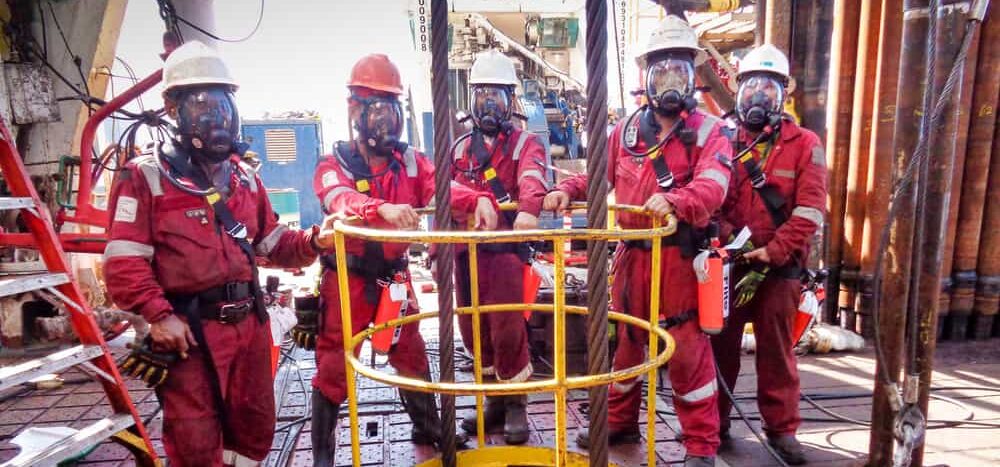In Alberta, the oil and gas industry employs over 145,000 people and continues growing. With the industry creating so many jobs in our province, each employee needs proper training to handle the risks of Hydrogen Sulphide exposure. To navigate these dangers safely and advance in your career, obtaining H2S Alive Certification is crucial.
The H2S Alive course prepares you to handle one of the industry’s most dangerous hazards, enhances your employability, and can open doors to new opportunities in the sector. Before enrolling in a course, here are the main factors to know about H2S Alive Training.
What is H2S?
H2S is a naturally occurring gas that comes about when organic material decays. It is a heavy, colourless, flammable, and toxic gas, hydrogen sulphide, to be exact. Exposure to this gas can result in a coma or death. Milder symptoms of accidental exposure might include headaches and eye irritation, but these are only some of the risks you take when dealing with H2S. You are at risk even if you only breathe in 0.07% of this gas.
Where Do You Commonly Find H2S Gas?
Here's a closer look at some common sources:
- Organic Decomposition: H2S is present in swamps and sewer environments, so these areas emit the odours we often smell.
- Geomorphology and Chemical Reactions: H2S is present in areas of active natural geomorphology such as volcanoes, hot springs and underwater sub-sea vents.
- Man-Made Environments and Industries: It is often found in the farming, coal mining, pulp and paper, petroleum, tanning, and smelting industries. The largest industrial cause of H2S is through petroleum refineries, as the hydrodesulfurization process separates sulphur from petroleum. Small amounts of H2S in crude petroleum and natural gas can contain up to 90% H2S.
Who Will Benefit From H2S Alive Training?
The primary focus of H2S training is for individuals working in the petroleum industry, where safety concerns with this toxic gas are high. This 8-hour course was created for Alberta workers typically working in the trades. Fields such as natural gas, drilling and mining, crude oil, etc, are all subject to the accumulation of hydrogen sulphide – and as a result, so are their workers.
While working underground, miners and tunnel workers might even be exposed to hydrogen sulphide within certain patches and regions. For this reason, those who will benefit most are workers in the trades who deal with hydrogen sulphide and other dangerous chemicals regularly. Generally speaking, the type of workers usually have jobs such as:
- Construction worker
- Miner
- Well driller
- Tunnel worker
- Maintenance crew
What Factors Do You Need to Know About H2S Alive Training?
1. It is required
The Canadian petroleum industry requires an H2S Alive course. It is required because when working in this industry, you have an elevated risk of being exposed to hydrogen sulphide gas and higher levels of it.
2. Learn How to Use Industry Safety Equipment
In addition to learning what to do in the event of an H2S gas leak, you will learn how to use the safety equipment required for your job. Some of these items will be:
- Skin protection gear
- Face shield
- Respirator
It is always beneficial to know how to use the equipment on site, whether in a dangerous situation or not. Being prepared is one of the best things you can do for yourself and your employees.
3. Learn Response and Rescue Procedures
You will learn how to respond to and rescue your coworkers. If you are completely safe but someone else is in danger, you can save their life by following the steps taught in an H2S Alive course.
4. Hands-on Approach
An H2S Alive training course will help you put into practice everything you learned and read. The course will create a mock scenario as if there were a gas leak and allow you to perform the actions learned through the course. This hands-on approach allows you to be better prepared should a real-life situation of this type occur.
5. Pre-Requisites
Here are the prerequisites required before taking the course:
- The ability to put on a mask and breathe with it on
- Must be capable of participating in rescue drag techniques
- Have a basic literacy and understanding of the language in which the course is taught
Get prepared and sign yourself and your employees up for this safety course. The benefits are infinite when it comes to saving a life.
What Will You Learn From H2S Alive Training?
Participants will better understand and properly manage hydrogen sulphide. You will learn the physical properties of H2S and the health risks involved in dealing with this chemical.
Other important information revealed in the course includes:
- How to properly protect yourself from H2S
- How to execute lift and drag practices
- The best ways to utilize a self-sufficient breathing device
- Fundamental rescue strategies
- Immediate and first-hand experience handling the apparatus’
You will receive the Energy Safety Canada Training Service certification upon completing this course. This credential proves your proficiency and competency in handling H2S and properly executing safety measures, and it will be valid for 3 years from completion.
Boost Your Career in the Oil and Gas Industry with H2S Alive Certification
In a competitive job market, H2S Alive Certification gives you a significant edge. Employers in the oil and gas industry prioritize candidates with this certification because it demonstrates readiness to handle the serious risks of H2S exposure. Whether you’re working on drilling sites, in refineries, or other high-risk environments, having this certification ensures you are equipped to manage H2S hazards effectively.
This certification is particularly beneficial for those looking to enter or advance within the industry. Many positions, especially those involving fieldwork, require H2S Alive Certification as a prerequisite. By getting certified, you meet the basic safety requirements, and employers know you are committed to maintaining a safe work environment. This can make you a more attractive candidate for higher-level positions and specialized roles.
Career Growth and Professional Development
Beyond improving your job prospects, H2S Alive Certification is a gateway to career advancement. With this credential, you are better positioned to take on roles that involve more responsibility and oversight, particularly in safety management and emergency response. As you gain experience and demonstrate your capability in managing H2S risks, you may find opportunities to move into supervisory or leadership roles within your organization.
When you are committed to safety, companies are more likely to invest in your continued professional development. This could include additional training, certifications, or leadership opportunities that further your oil and gas industry career. The knowledge and skills gained from H2S Alive Certification are invaluable assets that will serve you throughout your career.
Secure Your Safety and Career with H2S Alive Certification
If your work exposes you to Hydrogen Sulphide, whether in oil and gas, construction, maintenance, or industrial sectors, obtaining H2S Alive Certification is crucial. AIP Safety’s comprehensive 8-hour course is designed to equip you with the skills and knowledge to protect yourself and others in environments where H2S hazards are present.
From understanding the physical properties and health risks of H2S to mastering basic rescue techniques, our course ensures you are fully prepared to handle the dangers associated with this toxic gas. Upon successful completion, you’ll receive Energy Safety Canada Training Service certification, valid for three years, and a wallet card as proof of your qualification. AIP’s H2S Alive course allows you to move towards a safer, more secure career in the oil and gas industry.
Why Choose AIP Safety for Your H2S Alive Training?
Expert-led training makes all the difference when it comes to protecting your workforce from hydrogen sulphide exposure. At AIP Safety, we deliver certified H2S Alive Training in Calgary that meets industry standards and exceeds expectations with practical, hands-on instruction tailored to real job site scenarios.
Our experienced trainers are well-versed in the hazards of H2S and the importance of readiness. We understand that many companies operate across multiple locations, so we offer the flexibility to deliver training when and where you need it. Whether you're scheduling sessions for one site or coordinating training across offices, our team is equipped to make the process seamless.
Our 8-hour course covers all the critical factors to know about H2S Alive training, from understanding the toxic properties of H2S to learning how to use a self-contained breathing apparatus and perform basic rescue procedures. Upon completion, participants receive a 3-year certification and a wallet card as proof of qualification.
With a deep commitment to safety, customized scheduling, and a proven track record of training thousands of students, AIP Safety is your trusted partner for workplace safety education.
Register today or contact us to learn more about bringing H2S Alive training to your team.

